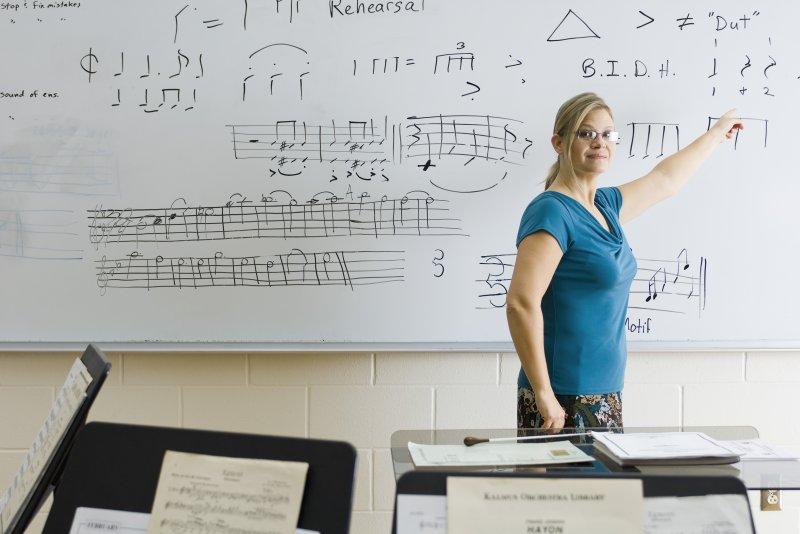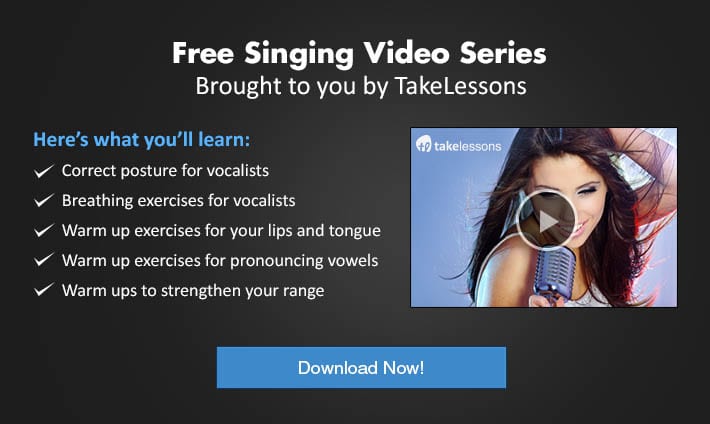It’s no secret that singers need to be able to sight-read in order to learn new music quickly.
However, many singers avoid sight reading exercises because they think they are too difficult or boring.
In reality, there are a number of fun and challenging exercises that can help singers improve their sight reading skills.
Here are five excellent sight reading exercises for singers!
What Are the 4 Steps for Sight Reading?
If you are new to sight reading, or are looking for ways to improve your technique, here are four steps that can help:
- Read the key signature and time signature. The key signature is a group of sharps or flats that indicate which notes will be sharp or flat for the rest of the song. The time signature tells you how many beats there are in a measure and what kind of note gets one beat.
- Start by getting a feel for the rhythm of the piece. Don’t worry about the notes yet – just focus on finding the pulse and counting out the beats. This will help you keep time as you start to play.
- Begin to look at the melodic line. Again, don’t worry about playing the notes perfectly – just get a sense of where the melody is going.
- Start adding in the harmony. Once again, don’t worry about perfection – just focus on getting all of the notes to sound good together.
When it comes to playing music, the ability to sight read is an essential skill. While some musicians are able to play by ear, most need to be able to read sheet music in order to perform. Sight reading can be a challenge, but it is possible to improve with practice.
The best way to learn how to sight read? Find yourself a singing instructor! They’ll be able to tell you about all the sight reading exercises you can and should be doing to hone your craft.
You’ll also learn other important singing skills, like what you see in the video below:
https://www.youtube.com/watch?v=CM9TQRoZJdw
How Do You Practice Sight Reading?
Unless you’re a career-chorister, the concept of sight reading music is probably going to at best make you slightly nervous, and at worst paralyze you with fright. However, at some point, probably when you join a choir or perhaps go to an audition, you’re going to have to face that hurdle.
Sight reading comes easier to some singers than others, but it’s not some mythical task akin to retrieving a golden fleece; sight-reading, even for the more able, is a learned skill, and there are several sight reading exercises you can practice to improve.
Here are five sight reading exercises that will make a difference and help calm your fears:
Familiarity
Pick an octave that comfortably covers the middle of your voice. Sit down at a piano and play up and down that octave; as a major scale, harmonic and melodic minor scale, and as a chromatic scale. Listen carefully to each of the notes, and fix them in your mind and your ear.
Next, play intervals to yourself within that octave and memorize the sound of the interval. The final stage – a friend will be useful here – is to play the home note, and then sing back a specific interval. Check your work thoroughly, as this sight reading exercise has as much to do with memory as anything else!
Ear and Eye
Once your ear has established what those intervals sound like, train your eye to recognize them on paper, as you’re going to struggle in any sight reading exercises if you can’t translate that knowledge from ear to page.
Be aware that intervals don’t always look how you might expect on paper, so use this as an opportunity to improve your general music reading skills as well.
How Do You Eat an Elephant?
The answer should always be “a forkful at a time”! It may feel overwhelming to be faced with a whole page of tricky music during sight reading exercises, but dealing with it one bar at a time will make it seem much less scary. If the whole page fills you with panic, put the brakes on for a moment and just deal with small sections at a time.
Map Reading
Think of a piece of music like a roadmap. Take careful note of key and time signatures, and pinpoint interesting “landmarks” like accidentals or key changes. Look ahead, and fix “rest spots,” i.e. half or whole notes where you can take stock and plan your strategy for the rest of the piece. Don’t be afraid of sight reading new pieces a little under tempo – better to do this and keep going than practice with an error that you can’t shake.
Self-Sufficiency Rules
Nothing will give you greater confidence as a singer and a musician than being able to prepare your music yourself, and to know that you’ve prepared it accurately. There are many singers out there – even working within the classical industry at the very highest level – that can’t read music, and need a voice coach to teach them every single note. Being able to read songs as easily as you would a newspaper is a valuable skill that will carry you far.
More Simple Sight Reading Exercises to Try
As a musician, being able to sight read is a valuable skill. Not only does it allow you to quickly learn new pieces, but it also allows you to play with other musicians without having to prepare in advance. If you’re looking to improve your sight reading skills, here are a few simple exercises to try.
First, try reading through a piece of music at a slow tempo. This will help you to get a feel for the melody and harmony.
Next, try playing the piece in your head before you start sight reading. This will help you to better see the music on the page.
Finally, try sight reading with someone else.
Playing with another musician will help you to keep up with the tempo and stay on track. With some practice, these exercises will help you to become a better sight reader in no time.
Free Sight Reading Exercises
Anyone who wants to improve their sight reading skills can find a wealth of exercises online. While some websites charge for access to their sight reading materials, there are also many that offer free exercises. The following sites are all great places to start:
- 8notes.com – this site offers a wide variety of free sight reading exercises for both Treble and Bass clefs. Users can choose to practice with or without a metronome, and can also select the range of notes they want to focus on.
- SightReadingFactory.com – this site provides users with tailored sight reading exercises based on their level of experience and the type of music they want to play. Exercises are available for a variety of instruments, including piano, guitar, and voice. Users can also create a free account to track their progress over time.
- MusicTheory.net – this site offers a comprehensive set of free sight reading exercises for all levels, covering everything from simple intervals to complex chords. Exercises can be printed out or accessed online, and users can also customize the difficulty level to suit their needs.
With so many great resources available, there’s no excuse not to start improving your sight reading skills today!
Choral Sight Reading Exercises
Choral sight reading exercises are an important part of any singer’s training. By working on these exercises regularly, singers can develop the skills needed to quickly and accurately read new pieces of music.
There are a variety of sight reading exercises that can be used, and many choirs use a combination of different exercises to keep things interesting.
Some common sight reading exercises include singing scales and intervals, sight-singing Melodies, and dictation exercises.
By doing these exercises regularly, singers will find it easier to learn new pieces of music and will be better prepared for performances.
Rhythmic Sight Reading Exercises
To develop facility in rhythmic sight reading, it is important to practice regularly. There are a number of different exercises that can be helpful, but some of the most effective include:
- Practice tapping out rhythms with your hands or a drum. Not only will this help to develop a feel for the timing of different notes, but it will also increase your coordination.
- Use a metronome. This is an essential tool for developing accuracy in your timing. Start by setting the metronome to a slow tempo and gradually increase the speed as you become more comfortable with the exercise.
- Read aloud while tapping out the rhythm. This will help you to better internalize the rhythm and will also improve your fluency.
- Write out rhythms in standard notation. This is a great way to develop your understanding of rhythmic notation. As you become more proficient, you can try writing out more complex rhythms.
By regularly practicing these and other rhythmic sight reading exercises, you can greatly improve your ability to read music accurately and fluently.
Can You Teach Yourself Sight Reading?
While some people are born “natural” sight readers, most of us have to work at it. And even the naturals can improve with practice. The good news is, there are plenty of ways to teach yourself sight reading, and you don’t necessarily need a music teacher to get started.
One helpful method is to find a singing tutorial online or in a book that includes exercises specifically for sight reading. As you work through the exercises, pay attention to the techniques the author uses to help you understand the music.
Another useful approach is to look for patterns in the music you’re trying to read. For instance, if you’re playing a piece with a lot of repeated notes, try to identify the interval between those notes.
By recognizing patterns, you’ll be able to read the music more quickly and easily. With a little practice, anyone can learn to sight read music notation. So don’t be discouraged if it seems difficult at first – keep at it, and soon you’ll be reading music like a pro!
But now that you have all these tools to make you a confident and capable singer, there is one final, important thing to bear in mind over and above any exercise or other preparation rule: Without a well-trained, properly-produced instrument, all of your work will be pointless.
Finding a good voice teacher is essential to take you beyond being a talented, untrained amateur singer with natural ability. Since we can’t hear our own voices accurately, it’s important to find a good teacher to help you identify and correct bad habits as they happen, and show you the right exercises to practice to improve your skills.
Good luck with your singing, and don’t forget to have fun!
Photo by Dave
Megan L.

